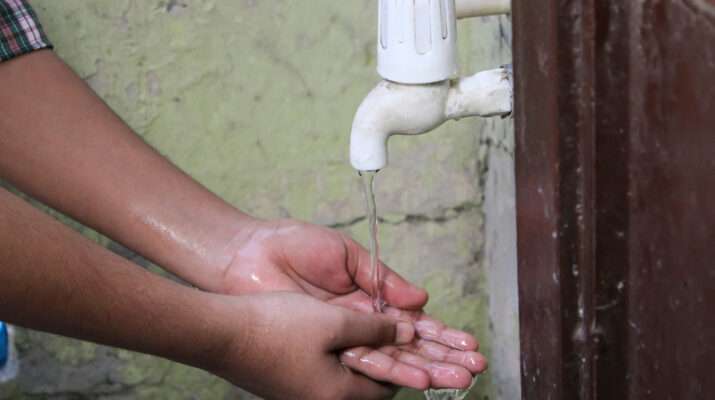Introduction
It is distressing to think about the ongoing global sanitation challenge in a world characterized by technical marvels and great development. A huge number of individuals keep on confronting social injustice, infection, and poverty because of their powerlessness to get safe drinking water and satisfactory sanitation.
Additionally, a staggering 673 million individuals continue to engage in open defecation practices, and an estimated 367 million children attend schools lacking proper sanitation facilities.
This article centers around open defecation to exhibit how challenging the current sanitation circumstance is. We shall move from a global perspective to the particular scenario in India before delving into the problems at the state level.
The Global Sanitation Crisis
Open defecation has serious and significant results. It harms human well-being, dignity, and the climate too. Exposure to defecation can result in diarrhea, gastrointestinal diseases, lack of healthy sustenance, and so forth. These sicknesses can hurt children’s physical and mental development, bringing about diminished educational and societal growth.
Besides, open defecation disregards the protection and security of women and girls, who might endure provocation or attack while searching for a place to defecate. Moreover, by delivering ozone-harming substances and diseases into the biological system, open defecation can add to environmental decline, water contamination, and environmental change.
Addressing the Global Problems Related to Open Defecation
Different stakeholders have been cooperating to support the reception of protected and sustainable sanitation practices to reduce the worldwide sterilization challenge. The United Nations’ Sustainable Development Goals (SDGs) expect to guarantee general admittance to basic sanitation services by 2030 and to stop open defecation. The WHO gives specialized counsel and helps nations for them to carry out efficient sanitation policies and projects. The World Bank and other donors invest in sanitation infrastructure and service delivery.
Impact on Human Lives
Civil society organizations and community leaders raise awareness to help individuals change their ways of behaving and perspectives towards sanitation. These endeavors have brought about some advancement, yet considerably more should be initiated to guarantee that everybody can partake in the advantages of further improved sanitation.
The results of deficient sterilization are sweeping and obliterating, with open defecation playing a critical part.
- Globally, a child succumbs to diseases resulting from poor sanitation conditions every 20 seconds.
- Unsafe drinking water, often associated with open defecation, contributes to a staggering 21% of disease spread worldwide.
Open Defecation in India: A Sobering Statistic
Lack of sanitation facilities
One of the significant difficulties in addressing open defecation is the arrangement of satisfactory and useful latrines with a clean water supply. Numerous public latrines that have been developed are either ineffectively planned, deficient in number, ineffectively kept up with, or need a water supply, making them unusable and unhygienic. Subsequently, many individuals opt to relieve themselves in the open as opposed to utilizing these facilities.
Cultural factors
Another huge element that impacts open defecation is the attitude and conduct of individuals toward restroom utilization. A few studies have tracked down that in any event, when individuals approach government or private restrooms in their homes, they don’t utilize them consistently or at all.
Some of the reasons include low awareness of the health benefits of using a latrine, inclination for open-air defecation, absence of protection or security in restrooms, or normal practices and customs. India, with its immense populace, wrestles with a stunning open defecation issue, even as it puts resources into foundation improvement.
A startling 50 million individuals in India practice open defecation, despite having access to toilets. This dilemma underscores the need for not just infrastructure development but also behavior change interventions to promote proper sanitation practices.
Wide Disparities Within the Nation
The sanitation crisis in India is not uniform, and state-level disparities are striking. Nearly half of India’s population (around 594 million people) practiced open defecation, with India accounting for 90% of South Asia’s open defecation and half of the global total. Some Indian states have made significant strides in addressing open defecation, while others continue to grapple with the issue.
Sanitation at the State Level in India
Some Indian states have made significant strides in addressing open defecation, while others continue to grapple with the issue.
Bihar’s Ongoing Challenge
In contrast, the state of Bihar in northern India faces an ongoing challenge with open defecation. Despite efforts to improve sanitation facilities, cultural and behavioral factors continue to contribute to the problem.
Bihar’s struggle highlights the need for customized approaches to address open defecation at the state level.
Odisha Struggles to overcome this challenge
Odisha’s experience shows that toilet construction alone is not enough to eliminate open defecation, and that sustained behavior change communication is essential.
These were the examples of only some of the Indian states. The problems and challenges related to open defecation remain consistent throughout the nation. What can be done to overcome these challenges?
Banka Bio: Pioneering Solutions to Open Defecation
In the battle against open defecation and sanitation challenges in India, Banka Bio emerges as a beacon of hope. As a research-driven, award-winning enterprise deeply committed to impacting India’s Water, Sanitation, and Hygiene (WASH) value chain, Banka Bio is at the forefront of developing innovative infrastructure and services.
Through groundbreaking solutions, Banka Bio is working tirelessly to transform the sanitation landscape across the nation. By bridging the gap between technology, research, and on-ground implementation, Banka Bio is not only addressing the problems related to open defecation but also driving positive change in the lives of millions through it’s Unique Product Bio Toilet, bringing us one step closer to a sanitation-revolutionized India.
Conclusion
Understanding the global scale of deep-rooted sanitation crises, with a specific focus on open defecation, reveals a complex web of challenges. From global statistics to India’s nationwide problem and state-level disparities, it is clear that addressing this crisis requires tailored approaches and persistent efforts. India’s experiences, from Kerala’s success to Bihar’s ongoing challenge, serve as important lessons in the journey toward universal sanitation and a healthier, more equitable world.



